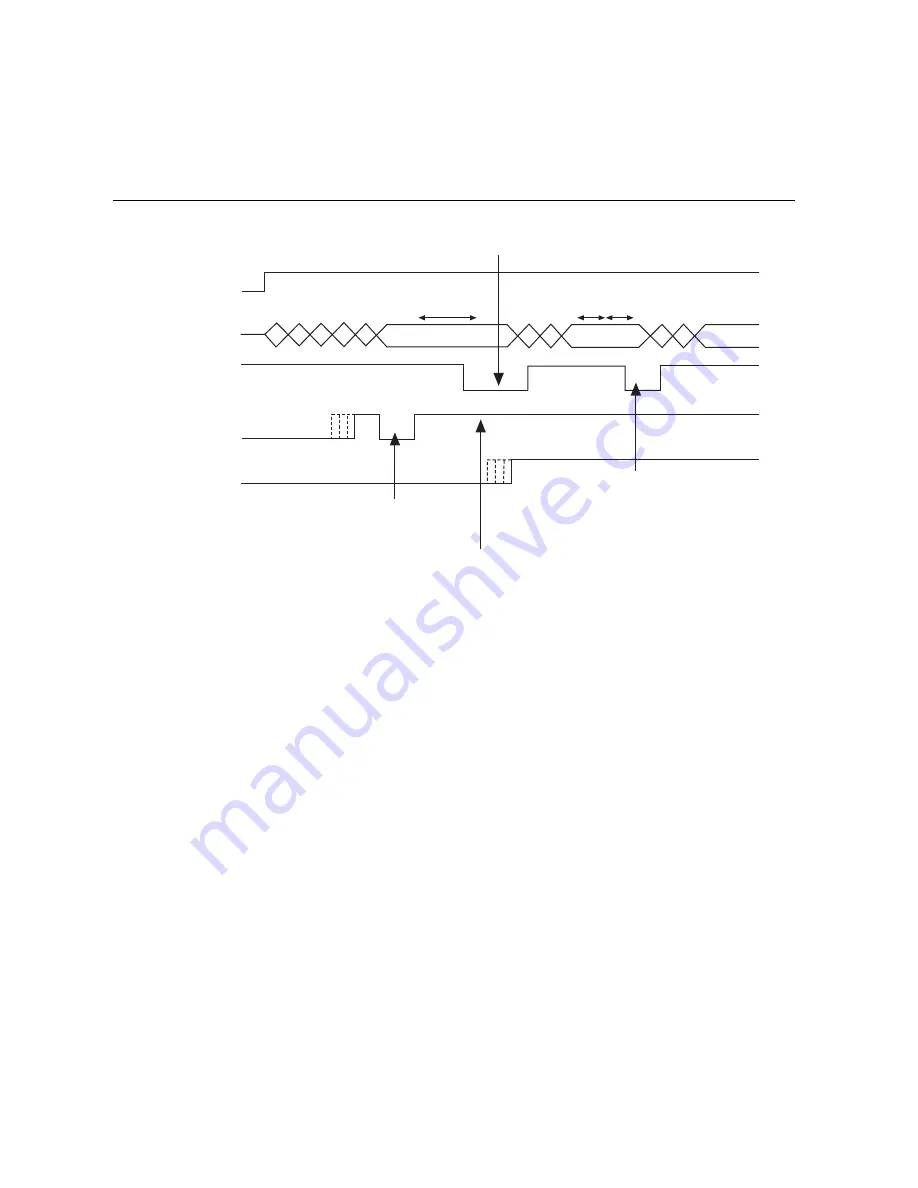
B-4
|
ni.com
Appendix B
Introduction to HS488
Case 1: Talker and Listener Are HS488-Capable
Figure B-3 and the following steps describe a typical sequence of events in an HS488 data
transfer in which both the Talker and Listener are HS488-capable.
Figure B-3.
HS488-Capable Talker and Listener
1.
The Controller addresses devices and becomes Standby Controller by unasserting ATN.
2.
The Listener asserts NDAC and NRFD.
3.
The Listener unasserts NRFD as it becomes ready to accept a byte.
4.
After allowing time for the Listener to detect NRFD unasserted, the Talker indicates that it
is HS488-capable by sending the HSC message. To send the HSC message true, the Talker
asserts the NRFD signal.
5.
After allowing time for the Listener to respond to the HSC message, the Talker sends the
HSC message false. To send the HSC message false, the Talker unasserts the NRFD signal.
6.
When the Talker has a byte ready to send, it drives the data on the DIO signal lines, allows
some settling time, and asserts DAV.
7.
The Listener unasserts NDAC. HS488-capable Listeners do not assert NRFD as IEEE 488.1
devices would, so the Talker determines that the addressed Listener is HS488-capable.
8.
The Talker unasserts DAV and drives the next data byte on the GPIB.
9.
After allowing some settling time, the Talker asserts DAV.
10. The Listener latches the byte in response to the assertion (falling) edge of DAV.
11. After allowing some hold time, the Talker unasserts DAV and drives the next data byte on
the DIO signal lines.
12. Steps 9-11 are repeated for each data byte.
S
econd
b
yte tr
a
n
s
ferred
(
us
ing high-
s
peed mode).
L
a
ck of low-going tr
a
n
s
ition on
~NRFD indic
a
te
s
th
a
t
a
ll receiving
device
s
a
re high-
s
peed c
a
p
ab
le.
The
s
ending device
us
e
s
thi
s
high
s
peed c
a
p
ab
le
s
ign
a
l (the moment
a
ry,
low-going p
u
l
s
e on ~NRFD) to tell the
receiving device th
a
t the
s
ending
device i
s
c
a
p
ab
le of
s
ending d
a
t
a
us
ing the high-
s
peed h
a
nd
s
h
a
ke.
Fir
s
t
b
yte tr
a
n
s
ferred
(
us
ing 4
88
.1 h
a
nd
s
h
a
ke).
T1
3
T1
T14
~ATN
~DIO1
8
(compo
s
ite)
~DAV
~NFRD
~NDAC
















































